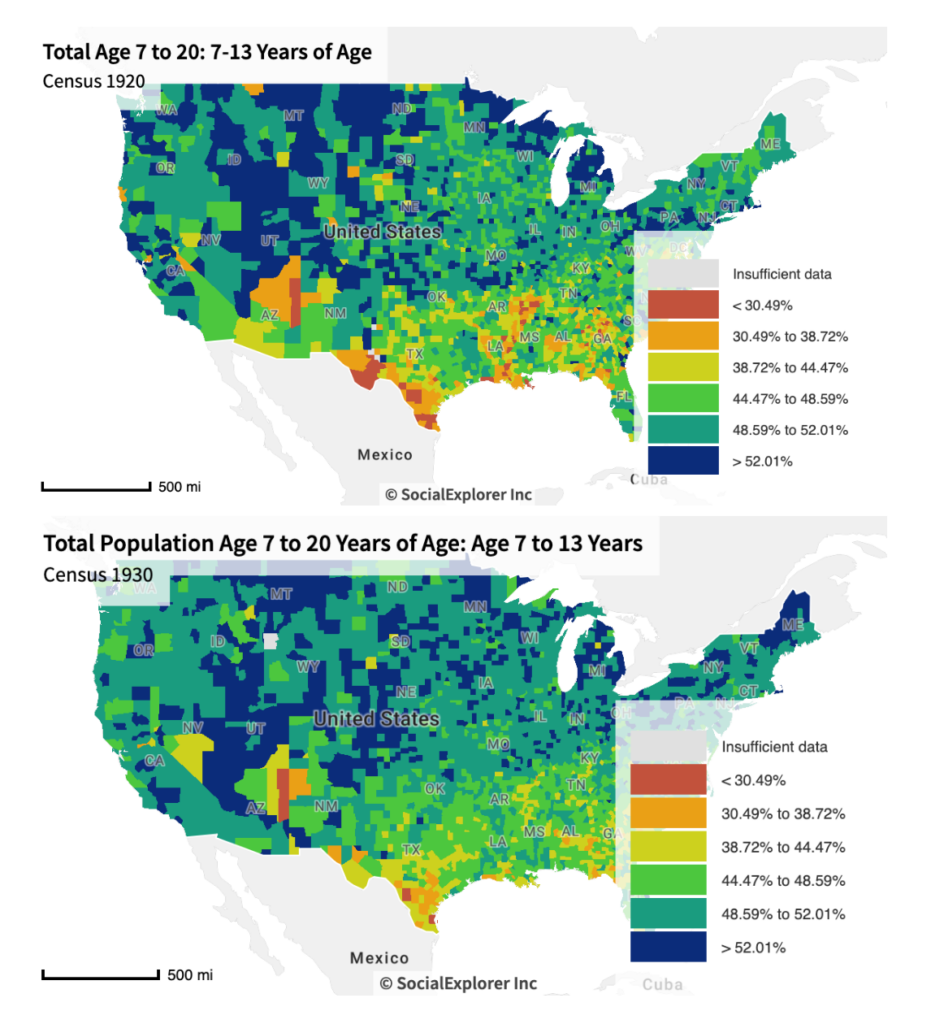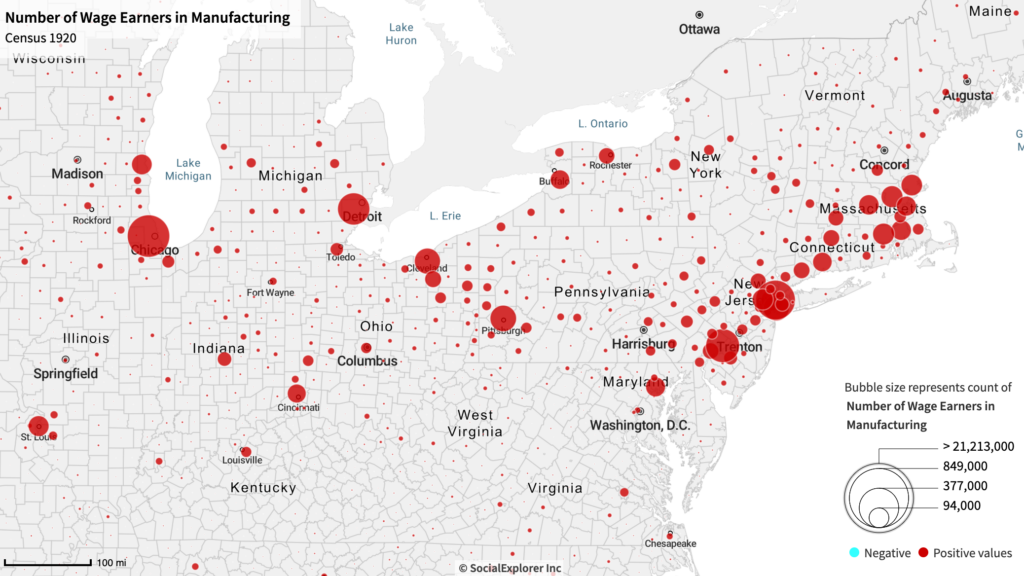Maps: Children Not Attending School
These maps show the percentages of children not attending school, ages 7-13 in 1920 and then 1930. Through them, we can see that the highest rates of children not attending school are actually located in the Western parts of the United States. The Northeast has the highest rates of school attendance in both decades. Additionally, we see that the percentage of children not attending school decreased over the 10-year period from 1920-1930. Nevertheless, the data remains geographically uneven.

Based on school attendance maps, we can draw conclusions that since so many kids did not attend school, perhaps, school was not a defining factor of childhood, in the same way it is now. During the early 1900s and before, children were working more than they attended school. This changed over time and differed with geographic location.
Class played a large role in what defined the ideal child, in terms of rites of passage. Looking at the school attendance maps and based on other readings we can see that poor kids were expected to work and help their families. More affluent children were expected to go to school. Entering school or work could be seen as a significant rite of passage.
Regional Differences and Industry
Map: 1920 Manufacturing Workforce

This map demonstrates significant regional variability of industrial economies. At this time, industry had a significant impact on communities. A community surrounding manufacturing is very different from one that is largely agricultural. It can be inferred that rites of passage also varied with regional economies as young people started waged labor on farms or in factories at different ages (Cope, 2019).
Additionally, World War I could be considered a rite of passage for many young adults on the cusp of working age. The domestic effort to support the war encouraged youth to step up and help out. Simultaneously, manufacturing industries saw increased production because of the war, meaning that there were more jobs available during and after the war years. (Honeck, 2018).
Timeline: Rites of Passage Over Time
This timeline shows that rites of passage play quite a significant role in the development of many children. This notion can be analyzed in a variety of contexts, including education and sports. The type of education a child receives and the sports they play vary significantly throughout time as they age. Children must be deemed mature and strong enough to play certain sports, as seen with Johnny Hanschen, whose mother trusted him with new boxing gloves as an adolescent. In the case of Johnny, it is also suggestive that parents’ trust in a child determines when certain rites of passage are reached, such as when a child can play sports that are seen as more suitable to adults, such as boxing. It could be seen as special for young people when they qualify for adult sports.
Additionally, the type and complexity of education vary throughout children’s lives because children acquire knowledge as they mature and achieve rites of passage. Children are often referred to as blank slates that one can mold into any type of adult, and education and the quality of the teacher have the capability to mold a child into an intelligent and respectable adult, and that molding process takes place throughout a child’s entire childhood and is directly correlated with rites of passage, as a child acquires more and more complex information in the classroom that they can utilize as adults and in the workforce.